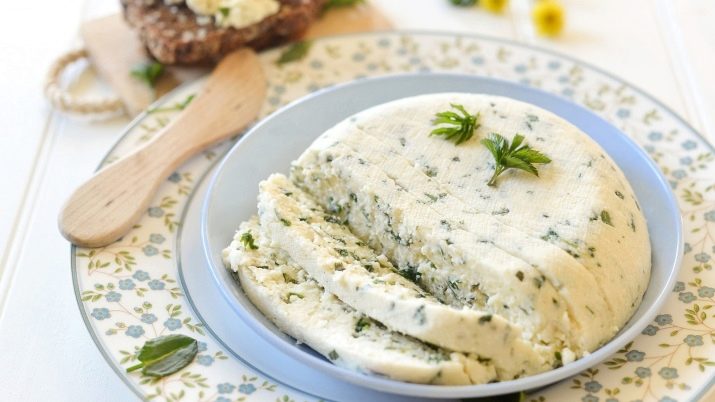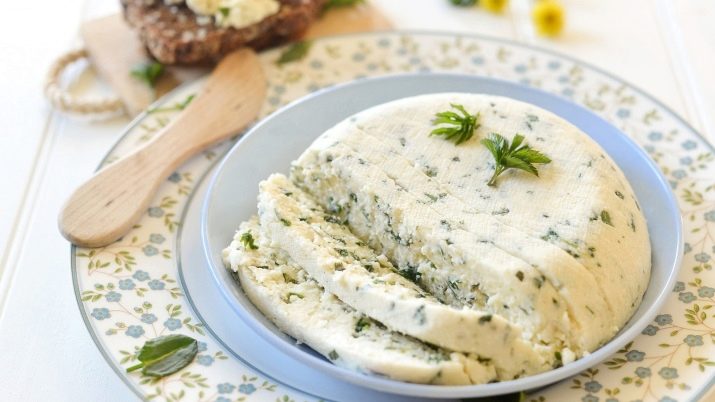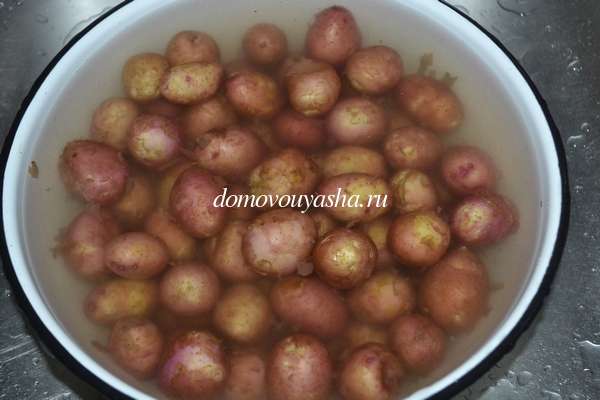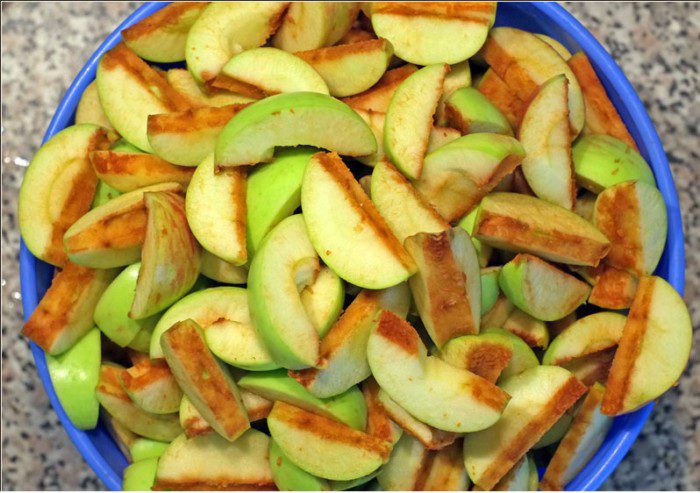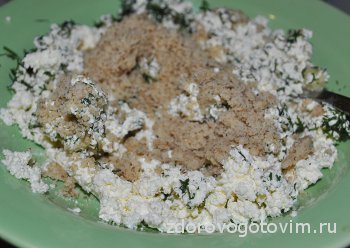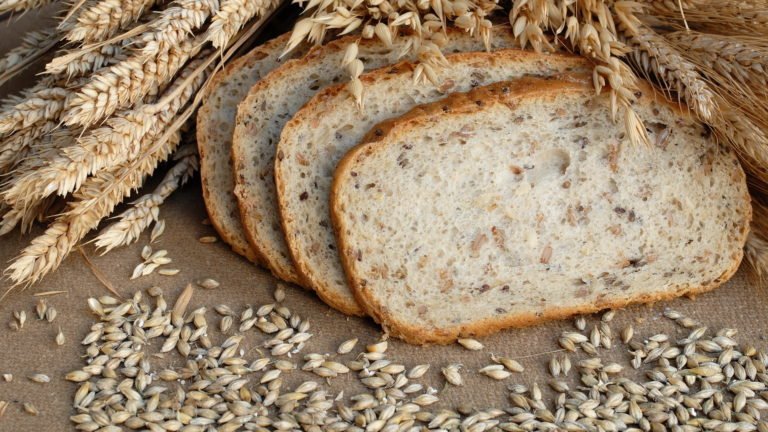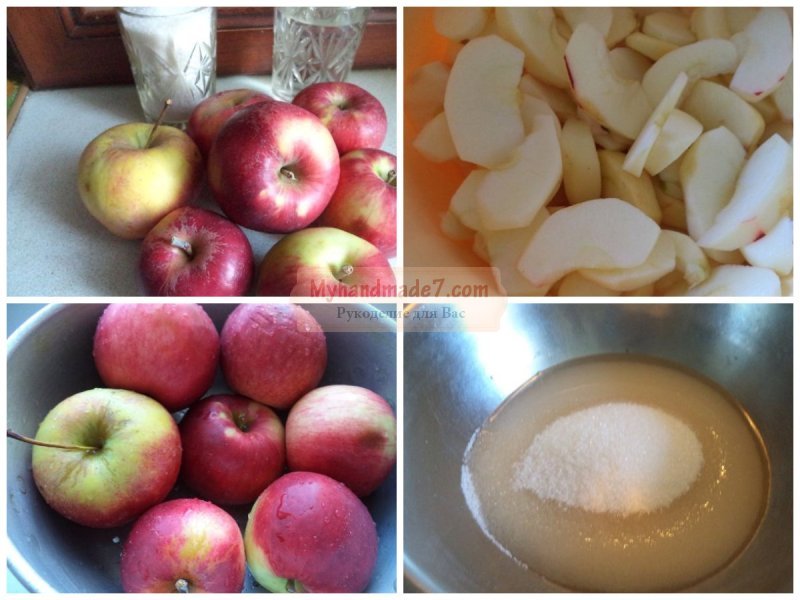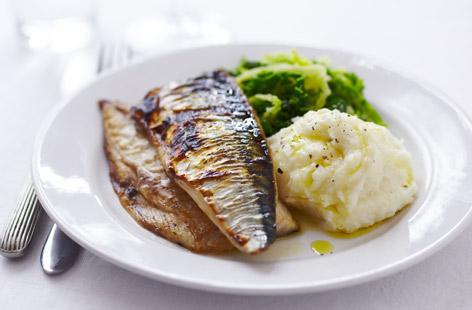Dough bread without yeast on rye. Tasty and healthy bread without yeast: cook it yourself in the oven
Before starting, recall:
- the combination of starches and protein is the most difficult for digestion and dangerous for health, so mixing nuts and seeds with cereals can be very tasty, but makes any recipe more difficult (unlike oilcake or grated vegetables, fiber always helps digestion, strengthens peristalsis, absorbs toxins and enriches any dish);
- germinated cereals are always easier to assimilate than “dry” ones, even after heat treatment (though it will be possible to grind such seeds only in “minced meat”, and not in flour);
- sweets (dried fruits) with starches do not mix well, so it’s best to add them minimally.
Homemade Yeast Bread Recipes
1. Simple unleavened cakes
Ingredients:
- 1 glass of water
- 2.5 cups flour (preferably whole grain)
- 1.5 teaspoons of salt
- vegetables - a little bell pepper, carrot cake from juice, olives, sun-dried tomatoes, garlic, herbs are also suitable.
Homemade bread without yeast:
- Stir salt in water. Gradually pour flour into salt water in a thin stream.
- Knead the dough. Then let the test stand (rest) for 20-30 minutes.
- Heat the pan.
- Thinly roll a cake.
- Dry the cake for a few seconds in a hot pan. In total, 10-12 cakes are obtained.
- Ready cakes must be sprinkled with water (can be from a household spray), otherwise they will be crispy.
- Store cakes better in a plastic bag in the refrigerator for no more than 3 days.
2. Homemade kefir bread
Very simple - a little kefir and salt + rye flour, according to the mood, you can add caraway seeds, seeds, etc.
Sift the ground wheat (in a mill type coffee grinder) thoroughly through a fine sieve to make 3 cups of flour (or take ready-made whole-grain flour - but remember that it cannot be stored for a long time, so purchased - probably with additives!).
Then add a little salt (to taste), your favorite spices (coriander, cumin, etc.), 1/2 tablespoon of baking soda can be added, you can add ground seeds or nuts, and gradually pour in, stirring the dough, whey from homemade cottage cheese, about a glass and a half, and until you get a thick dough.
Mix well, bake in the form of cakes.
Spread the dough on baking paper.
Oven an hour in the oven, preheated to 180-190 degrees.
Instead of whey, liquid curd and 2 eggs are suitable (one yolk is better). The taste will be almost the same, kefir is also suitable (much better than baker's yeast, although kefir itself is also a yeast product (product of kefir mushroom fermentation).
3. Based on Irish soda bread
- 250 g whole wheat flour
- 250 gr rye flour
- 250 gr oatmeal
- 1/2 tbs ground nuts
- 4 tbsp vegetable oil
- 1 tsp salt
- 1 tsp soda
- juice of 1 lemon
- 500-600 ml of water
Homemade bread without yeast:
- Heat the oven strongly, grease a baking sheet with oil and sprinkle with flour. Lay out the dough. In the baking process, make cuts on the crust.
- Lemon juice and water can be replaced with whey, kefir, etc., you can add raisins, fried or raw onions, bell pepper, caraway seeds, carrot juice cake, etc.
4. Potato cakes
Ingredients:
- 300 ml (one and a half cup) mashed potatoes (can be on water)
- 1 tsp salt
- 300 ml flour
- 1 egg (you can try using only the yolk - so the recipe as a whole will turn out to be easier for digestion and less harmful, respectively).
Cooking:
- Knead the dough quickly, divide into 10 parts and put on baking paper in the form of 10 thin (about 5 mm) flat cakes. Poke each with a fork, otherwise the cakes will rise.
- Bake at 250 C for approximately 13-15 minutes (should lightly brown).
- Cool, you can eat warm or cooled, very tasty with butter, sour cream and herbs.
5. Oatmeal cakes
Ingredients:
- 600 ml (3 cups) oatmeal
- 250 ml of flour (can be dark, whole grain, wallpaper grinding)
- 1.5 tsp salt
- 1 tsp soda
- 600 ml of kefir
- 50 g melted butter (or olive)
How to cook oatmeal cakes:
- Knead the dough, let it brew for half an hour, then in the same way as in the previous recipe, lay out and skim the round cakes and bake at 250 C for about 15 minutes (you need to watch so that they start to brown a little).
- You can not give it a round shape, but spread it out as it turns out on baking paper, poke it with a fork and conditionally cut it somewhere after 7 minutes, when the dough sets. And then, already taking it out of the oven, break on a plate.
6. Fast, yeast-free pizza dough (recipe number 1)
Ingredients:
- 2 tbsp flour
- 1 tsp salt
- 2 eggs
- 1/2 tbsp warm milk
- 1 tsp olive oil
Pizza dough without yeast recipe:
- Mix flour with salt.
- Stir the eggs in a bowl with warm milk and add olive oil.
- Pour the mixture in small portions into a bowl of flour, constantly stirring. When all the liquid has been absorbed into the flour, begin to knead the dough, occasionally sprinkle the flour with your hands. Knead for 10 minutes until the dough is elastic.
- Make a ball from the dough, wrap it in a damp towel and leave for 15 minutes.
Fast yeast-free pizza dough (recipe number 2)
Ingredients:
- 1.5 cups wheat flour
- 1.5 cups rye peeled flour
- about 1 glass of water
- a pinch of salt
Pizza dough how to cook:
- If you prefer soft dough, then you need kefir instead of water and a pinch of baking soda (first, soda is added to kefir, infused for 5 minutes, then the mixture is poured into flour).
- Bake for 15 minutes and then another 15 with tomato paste and vegetables.
7. Rye bread on a traditional yeast-free sourdough
- Sourdough is prepared on some acidic basis (for example, brine). Warm brine, peeled rye flour, a little sugar for fermentation. Mix flour for the density of sour cream. In a warm place, the leaven will slowly rise. Several times it must be besieged. Each time, it will rise faster.
- After the sourdough is ready, the dough is put: warm water (the right amount), sourdough, salt, sugar (the sourdough needed for the work), peeled rye flour. The density of the dough is like pancakes. Rises in a warm place 4-5 hours, can be precipitated once. If the dough rises faster, it must be besieged and held for 4 hours - this is the norm for rye bread.
- A little wheat flour (~ 1/10 of the total amount), salt, sugar are added to the dough, and knead with rye flour. The dough is light. After the dough rises, it, without bending, is laid out in molds (1/2 the volume of the mold).
- It is better to work with rye dough by wetting your hands in water. With a wet hand, level it in shape, put in a warm place to approach.
- Rye bread is baked in a hot oven for 1 - 1.5 hours. After baking, the crust is moistened with water. Immediately cut rye bread can not be, it must cool. The readiness of the bread is checked by squeezing the lower and upper crusts: if the crumb between them quickly straightens, then the bread is baked well.
- The first baking may be unsuccessful, but each time the leaven will gain strength, and the dough will rise quickly. A little dough or a slice of dough is left for the next baking, stored in the refrigerator.
- The day before, in the evening, you need to update the starter culture: add a little water (you can cold) and mix rye flour. Until the morning it rises (~ 9-12 hours) and you can put a dough (see above).
8. Bread with hop yeast
1. Preparation of the starter culture
1.1. Pour dry hops with a double (by volume) amount of water and boil to reduce the water by half.
1.2. Insist the broth for 8 hours, drain and squeeze.
1.3. One glass of the resulting broth pour in a half-liter jar, dissolve 1 tbsp. a spoonful of sugar, 0.5 cups of wheat flour (stir until the lumps disappear).
1.4. Put the resulting solution in a warm place (30-35 degrees), covering with a cloth for two days. Sign of yeast readiness: the amount of solution in the jar will approximately double.
1.5. Two to three kilograms of bread requires 0.5 cups of yeast (2 tablespoons).
2. The number of components.
To bake 650-700 g of bread you need:
- water 1 cup (0.2 liters);
- for each glass of water required: flour 3 cups (400-450 gr.);
- salt 1 teaspoon;
- sugar 1 table. spoon;
- butter or margarine 1 table. spoon;
- wheat flakes 1-2 full table. spoons;
- leaven.
3. Cooking sponge
3.1. One glass of boiled water, cooled to a temperature of 30-35 degrees, is poured into the container for kneading, 1 table is stirred in it. a spoonful of sourdough and 1 cup flour.
3.2. The prepared solution is covered with a cloth and placed in a warm place for 2 hours until the formation of point bubbles. The presence of bubbles means that the dough is ready for kneading the dough.
4. Kneading dough
4.1. In a clean dish (a glass jar with a volume of not more than 0.2 liters, with a tight-fitting lid) we set aside the required amount (1-2 tbsp.spoons) of dough, this dough will serve as a starter for the next baking of bread, it must be stored in the refrigerator.
4.2. In a container with dough, add 2 tbsp. tablespoons of flour and other components in accordance with paragraph 2.1., that is, salt, sugar, butter, cereal (cereal is an optional component). Knead the dough until it comes off from the hands and lay in the mold.
4.3. The form is filled with a test of 0.3-0.5 of its volume no more. If the mold is not coated with Teflon, it must be lubricated with vegetable oil.
4.4. The form with the dough is put in a warm place for 4-6 hours. To maintain heat, it must be tightly covered. If, after the indicated time, the dough doubles in volume, it means it has loosened up and is ready for baking.
5. Baking mode
5.1. The mold should be placed in the middle of the oven on a wire rack.
5.2. The baking temperature is 180-200 degrees. Baking time 50 minutes.
Bread constantly accompanies us, we are used to eating absolutely everything with bread. If for some reason you do not want to buy ready-made bread in the store, or there is no such opportunity, you can bake this product at home.
You can bake any bread, such as rye or wheat. Everything will depend on what kind of flour is currently available.
By the way, crisp and soft bread is very simple - after the bread is ready, leave it in the oven with the door open for about half an hour. So that the crust does not crumble very strongly - after baking, put a damp towel on the bread.
Sourdough homemade bread
To prepare the starter culture, it will be enough to add 100 grams of rye flour and a third of a glass of water. Mix the mixture thoroughly, leave for a day at a temperature of 25-27 degrees in a 0.5l jar
After a day, add the same ingredients in the same ratio, mix thoroughly.
After the sourdough begins to grow - remove 50% of the mixture from the can, and add the same ingredients - again for a day.
We repeat this process daily until the sourdough becomes viscous and there is no persistent yeast smell in the jar.
 Recipe for leavening bread dough
Recipe for leavening bread dough
1. We take 200 g of starter culture, put in an enameled bowl, add 200-400 ml of water, salt, spices - to taste. Then add flour. You can experiment with any kind and ratio. Please note that the flour must be sifted through a fine sieve, otherwise there will be lumps in the dough.
2. First you need to knead with a spoon, after the dough is already more or less formed - you can start kneading with your hands. This must be done very intensively until the product becomes homogeneous and malleable.
4. For baking, preheat the oven to about 150 degrees, leave the dough in order to fit (in volume) - you need to pay attention that the container should be at least several times larger. After readiness, transfer to a cold baking sheet and bake. You can use the form, but it will have to be lubricated with vegetable oil and sprinkle flour on the surface. There are silicone forms - it is enough to simply cover them with an even layer of flour.
5. The finished product is baked at a temperature of 200-240 degrees, about 40 minutes in time. The time may vary, you need to check periodically as soon as the crust appears - you can check by piercing it. The crumb should return to its shape after compression. You can cut it only after cooling, if you want to cool faster - put the finished loaf on a towel, cover the second one from above.
Recipe for homemade rye bread without yeast
After I became interested in baking bread at home, I tried many recipes. The recipe for this bread attracted me by the fact that the dough is prepared without yeast, leavened. The starter that needs to be cooked itself ripens for 72 hours !!! And then you need to stand the bread for 27 hours (in the original 39 !!!). The first time I did everything, as was written in the recipe. The bread didn’t turn out the way I imagined it ... But I didn’t give up !!! I re-read the recipe, took into account all the nuances, decided to change something and cook again! Pets were spinning around my temple, saying that I should calm down and spit on this matter, but I still decided to get mine. I must tell you that according to the recipe it would be nice to put beet molasses in the dough, but how many I did not look for, I did not find molasses. It’s good that you can replace it with brown sugar (not just cane sugar, but dark brown!). The main ingredient is patience! Let's get started!
Ingredients
For sourdough:
1 day:
Rye flour - 4 tbsp.
Warm water - 4 tbsp.
3 day:
Rye flour - 2 tbsp.
Warm water - 2 tbsp.
For bread:
Rye sourdough - 2 tablespoons
Rye flour - 300 gr.
Warm water - 180 ml.
Salt - 1 tsp
Beet molasses or brown sugar - 2 tsp.
Cooking
1. First, prepare the leaven. Mix flour and water. Cover with a napkin and clean in a warm place (25-30 degrees). At first, your “flour porridge” will not show any signs of fermentation, but on the second day it will become “alive”, you will see bubbles, the mass will begin to increase. Exactly 48 hours later, you will add more flour and water. Move, cover and clean again in a warm place for 24 hours. Do not cover tightly with a lid, otherwise the sourdough may become moldy.
2. 72 hours have passed. Now you can knead the dough. Mix the starter, salt, sugar and water. Gradually introduce flour. Knead the dough within 5 minutes.
3. It will stick to your hands, so you can sprinkle flour.
4. You will get a small bun. Form a loaf out of it. Take a baking sheet, cover it with paper and lay the dough on it. Wrap the top with cling film, cover with a napkin or towel and put in a warm place (25-30 degrees) for 27 hours. In my experience, it is advisable not to touch the dough and not to squeeze. Wait for ripening. The dough will increase, but not much.
5. Only after 27 hours, you take off the film, sprinkle it with thick flour and put in the oven preheated to 220 degrees and immediately reduce to 200. Bake for 30-35 minutes.
6. When our bread is ready, then do not get it out of the oven, leave it to cool with the door open. You can take it out warm and wrap it in a towel for 10 - 15 minutes. Here it is, our long-awaited!
7. Well, of course you ask what kind of taste he has))) A little sour, characteristic of the taste of rye bread. The crumb sticks a little, like Borodinsky’s. My family loved it))) Cut it into thin slices, spread butter ... but you can also without oil!
8. And if you put on a slice a piece of sprat spicy salting ...))) Well, sooo tasty !!!
 How to cook regular bread at home. Jamie Oliver's Recipe
How to cook regular bread at home. Jamie Oliver's Recipe
1 kg of wheat flour
2 tbsp Sahara
2 tsp salt, it is better to take sea
500 ml of warm water
2-3 sachets of dry yeast or 30 g of fresh yeast
Cooking
1. Lay the flour in a slide on a clean surface and make a large “well” in the middle. Pour half the indicated amount of water into the well, then add yeast, sugar and salt. Gently mix the contents of the “well” with a fork.
2. Slowly collect the flour with your hands along the edges of the slide and knead in the center of the "well", being careful not to damage the walls, otherwise the water will spill. Continue to fill the “well” with flour until the total mass is thickened and has the consistency of a viscous porridge - now you can add the remaining water. Keep kneading until the dough stops sticking to your hands. Periodically sprinkle flour on your hands to make it easier to cope with the dough (some types of flour require more or less water - add as much as you like).
3. When kneading the dough, work with your hands - push, fold, roll, clap and slap the dough for 4–5 minutes until it becomes elastic.
4. Pour a small amount of flour into the dough and place it in a large bowl. Cover with cling film and set aside for half an hour or an hour, until it doubles in size; It would be ideal to put it in a humid, warm, windproof room.
5. When the dough is doubled, knock out air from it, crushing and twisting it for 30 seconds. At this stage you can add any seasonings and ingredients to improve the taste. Put in the form and leave the dough for another half an hour or an hour, until it doubles in size again.
6. Put the dough on a baking sheet sprinkled with flour, and place in a preheated oven. Do not slam the door sharply, otherwise you will lose some of the necessary air. Bake at the temperature (the same goes for time) specified in the recipe. You can check the readiness by knocking on the base of the bread - if the sound comes from a vacuum, the bread is ready. Place the finished bread on the wire rack and set aside for 30 minutes. If you get more bread than you need, feel free to send it to the freezer.
Enjoy your meal!
If you cook it at home. Recently, the quality and taste of purchased bread is getting worse and worse, and there are a number of objective reasons for this. Firstly, there is no proper quality control, secondly, the manufacturer is trying to save on everything, and thirdly, the ingredients that are put in the bread make it completely different from what it should be. Therefore, many begin to think about how to make natural, tasty, healthy bread without yeast at home. And the first thing that starts the preparation is leaven.
Sourdough for bread It has dozens of different cooking variations. You can prepare the starter using honey, kefir, hops, malt, various types of flour, etc. In this article I will tell you how to cook sourdough for yeast-free breadbased on personal experience and knowledge.
I took the basic cooking tips on the Internet, but in practice it turned out that not everything is so simple and if you don’t know some features, then sourdough for bread it may not work and baking you too will not please with its taste and aroma.
Eternal yeast for yeast-free bread
Already from the name of this leaven it becomes clear that it can be used more than once. And with the right approach, it really will become “eternal” and will be able to please you until the desire to bake bread disappears.
On the net there are many variations of this sourdough for bread. Someone takes as a basis rye flour, someone wheat, someone mixes different types of flour, thus trying to improve the quality of the starter yield. But, as personal experience and the experience of other bakers show, there is no difference what you choose as the basis, and there is no difference from which yeast to bake bread. If it is cooked correctly, then the loaves will be magnificent.

The ideal temperature for making sourdough is more than 25 degrees. This means that the apartment or house should not be cold, because otherwise the optimal temperature for the development and reproduction of bacteria will not be reached, the yeast will not grow, and the dough kneaded on it will not rise.
- In the process of cooking the yeast should be mixed regularly
Flour is heavier than water, therefore, even kneading the leaven, the flour will settle to the bottom of the dishes. I advise you to mix your starter 2-3 times a day to speed up the fermentation and growth process.
- Cooking time 3-5 days.
There are recipes that say that the yeast will be ready in 3 days, someone will cook 4. I, after the first unsuccessful experience, decided to play it safe and prepared the yeast for almost 5 days. But he clearly saw the process of growth and development, which indicated that the dough would rise and the bread would be excellent.
How to restore sourdough
As you already understood, we send part of the sourdough to the dough, and part of it we pour into the jar and put in the refrigerator. The next time you want to bake bread, take out the leaven, add a little flour to it (I do it by eye) and give her time to "feed". It is best in the evening to get the sourdough and leave it to "eat" for the night. In the morning, we again send part to the dough, and part to the refrigerator until the next baking. Thus, you do not need to wait 5 days each time to prepare a new yeast for yeast-free dough, but it will last 8-12 hours to make the finished product from the starter.
Thus, we get an eternal sourdough for bread, which can be used as long as there is a desire to cook.
P.S - on the Internet there are more complex recipes for starter cultures, more sophisticated with a large number of ingredients. But I think this option is optimal, because the bread is tasty, fluffy, soft, aromatic, and the process of preparing the sourdough does not take so much time.
Step 1: Prepare the sourdough from flour and water.
On the first day, sift 100 grams of wheat flour or any other into a deep bowl, add 100 grams of clean filtered water and stir well. In the end, you should get a mass of pasty consistency that looks like thick sour cream or even cream. Cover the bowl with a damp kitchen towel and place in a warm, secluded place where there are no drafts. In this state, the starter must roam about 1 day. At first, the flour will sink under water and let it not scare you. Just stir it occasionally 3-4 times a day will be quite enough. After this time, small rare bubbles should appear on the starter.Step 2: On the second day, add more flour and water.
 On the second day, our starter culture needs to be fed. To do this, sift through a fine sieve again into a bowl 100g flour and add as much water. Stir and again achieve the consistency of the mass as thick sour cream. We also cover the bowl with a damp towel and set it in a warm place without drafts. After this time, we expect bubbles on the sourdough, they should already be a little more. Stir ferment must be at least 4 times in the second day.
On the second day, our starter culture needs to be fed. To do this, sift through a fine sieve again into a bowl 100g flour and add as much water. Stir and again achieve the consistency of the mass as thick sour cream. We also cover the bowl with a damp towel and set it in a warm place without drafts. After this time, we expect bubbles on the sourdough, they should already be a little more. Stir ferment must be at least 4 times in the second day.
Step 3: Bring the leaven to readiness.
 On the third day, as a rule, questions should not arise. The mass should bubble well and rise, and a froth cap should form on the surface of the sourdough. Add water and flour to the leaven again in the same proportion, mix well, cover with a towel and put in a warm place for another day. Do not forget to stir it periodically. When the foam mass is ready, feed it again and leave it for separation on the fourth day. Ferment during this time should increase in size by approximately 2 times, it will be the peak of her form. It is very important not to miss this moment, because it is then very strong. After this, the leaven can be divided into 2 halves, add one part to the bread dough for baking, but put the second in a clean jar, wrap tightly with polyethylene on top, make holes in it so that our leaven does not suffocate and put in the refrigerator. Before you are planning to bake bread, take it out again to feed it according to the technology described above and it is ready.
On the third day, as a rule, questions should not arise. The mass should bubble well and rise, and a froth cap should form on the surface of the sourdough. Add water and flour to the leaven again in the same proportion, mix well, cover with a towel and put in a warm place for another day. Do not forget to stir it periodically. When the foam mass is ready, feed it again and leave it for separation on the fourth day. Ferment during this time should increase in size by approximately 2 times, it will be the peak of her form. It is very important not to miss this moment, because it is then very strong. After this, the leaven can be divided into 2 halves, add one part to the bread dough for baking, but put the second in a clean jar, wrap tightly with polyethylene on top, make holes in it so that our leaven does not suffocate and put in the refrigerator. Before you are planning to bake bread, take it out again to feed it according to the technology described above and it is ready. Step 4: Serve the “Eternal” sourdough for bread.
 For baking one loaf you will need approximately 6 tablespoons of sourdough. The effect of the application of such a starter culture will not only surprise you, but it will truly delight and delight the whole family and guests, the bread is simply fabulous in taste. Good appetite!
For baking one loaf you will need approximately 6 tablespoons of sourdough. The effect of the application of such a starter culture will not only surprise you, but it will truly delight and delight the whole family and guests, the bread is simply fabulous in taste. Good appetite! There is one old way to speed up the reaction. If there are no long bubbles, add a pinch of sugar to the mass.
Ferment is not in vain called "Eternal". It can be stored in the refrigerator for a very long time. But before you start using it, you need to "feed" it. To do this, you need to get it out of the refrigerator, add a little flour and water (3 tablespoons of each ingredient) and keep a little warm. Once you see the reaction, you can proceed with further cooking.
The birth of sourdough
Ferment is prepared once, and subsequently only used and replenished. It is a living dough that can doze in the refrigerator, and can actively rise if it is fed. Sourdough biomass consists of natural microorganisms (fungi, bacteria, etc.) that live on rye grains.
The point is to revitalize, propagate and grow these microorganisms so that they self-organize into a stable symbiotic colony. Life itself in nature is built on the principle of symbiotic colonies of micro– or macroorganisms (for example, soil, ocean, intestinal microflora). Organisms in symbiosis support and complement each other.
Sourdough is prepared simply from flour and water. Ratio: 2 parts of flour and 3 parts of water (exactly one and a half times more water). You will need a room thermometer, a digital kitchen scale, a glass pan or can with a capacity of 1.5 liters, a wooden spatula. In time it will take four days, on the fifth you can already bake bread.
Sourdough should be prepared exclusively and only on the basis of rye flour, because rye sourdough, in comparison with wheat and other, is the most stable, healthy and strong. Those microorganisms that live on rye grains are quite enough to organize a well-coordinated symbiotic colony.
Washing the grain does not have a significant effect on microorganisms, you can not worry about this. But high-temperature drying kills most of the necessary microorganisms, therefore, germinated grain for starter culture should be dried at a temperature of no higher than 41 ° C. Obviously, flour made industrially is not suitable for creating high-quality sourdough.
As already mentioned, the sourdough is prepared once, then it can be used continuously, putting off part of the batch for the next baking.
Cooking Technology:
1. Load the measured grain weight into the mill, grind the flour directly into the pan, fig. 13. The degree of grinding should be set to the smallest fraction.
2. On the scales measure the right amount of warm water, with a temperature of no higher than 36–37 ° C. Water should be clean, filtered, not chlorinated. You can take spring water, boiled or distilled, infused with shungite and flint.
3. Pour water into a pan with flour and stir with a wooden spatula so that the flour is evenly combined with water. You get a dough of thick sour cream, rice. 14.
4. Cover the pan (or jar) with a lid, do not tightly, cover it with a cotton napkin from the light, and put it in a secluded place, away from drafts and electrical appliances. The optimum temperature for feeding the starter culture is about 24–26 ° C, not higher. Find a place in the kitchen with a thermometer. Closer to the ceiling - warmer.
This procedure will need to be repeated four days in the morning and in the evening:
Day 1. Morning 40 g flour, 60 g water. Evening 40 g flour, 60 g water.
Day 2. Morning 40 g of flour, 60 g of water. Evening 40 g flour, 60 g water.
Day 3. Morning 40 g of flour, 60 g of water. Evening 40 g flour, 60 g water.
Day 4. Morning 40 g of flour, 60 g of water. Evening 40 g flour, 60 g water.
Day 5. In the morning we already have 800 g of sourdough. 500 g will go to the first bread. We put the rest in the refrigerator until the next baking, fig. 15.
Sourdough should have a pleasant smell of natural kvass. If the starter has a bad smell, it means that you have violated the technology in some way or used dirty dishes. If everything is done correctly, but the smell is still nauseous or chemical, it means that perhaps the environment in the room where the leaven is made is not environmentally friendly. Or the initial raw material - grain - caught substandard or containing some foreign impurities. In this case, you should find grain from another producer and trader.
Some prescription authors write that the smell of burping or something else for sourdough is “normal.” But this is not normal. There should not be any “disgusting smell” in the starter culture. If on the fifth day the sourdough has a smell of alcohol, acetone, vinegar or mold in general, you can throw it away and start over. Try not to break the technology, and you will succeed.
At the same time, excessive perfectionism is not required here. The behavior of the starter culture is quite stable, so that all parameters are permissible to vary slightly. For example, it is desirable to maintain the temperature regime, but not necessarily too pedantically. Now a few practical tips.
It is better to choose electronic scales such that there was a function of dumping of indications. The principle is as follows: the container (container) is put on the scales, the button is pressed, the balance readings are reset to zero, then the product is loaded into the container, and the net weight is thus displayed on the display. It's comfortable.
To store the part of the sourdough that goes to the next baking, you need to pick up a container - made of glass, ceramic or food-grade plastic. The lid should be leaky, but not too open so that the leaven does not absorb odors from the refrigerator. If the lid is plastic and closes tightly, you can make a few holes in it with a needle. Fermentation dishes should not be washed with household chemicals. Everything is easily washed off with warm water.
Sourdough can be stored in the refrigerator, on the top shelf, where not the lowest temperature. Long breaks in baking bread are undesirable. Ferment should be updated regularly. Personally, I tried to leave her for half a month, and she came to life safely. Perhaps the leaven is able to survive for three weeks, but it is better not to leave it longer than this, otherwise it will have to be reborn. Still, leaven is a living colony of microorganisms, and you need to treat it as a living entity. If you leave for a long time, instruct someone to look after and feed at least once a week.
Flour should always be ground before use. No need to store it - this is a perishable product. Vitamins and nutrients in the air quickly oxidize. That is why flour of industrial production cannot be considered a natural product - manufacturers will go to any tricks, just to increase the implementation period.
The degree of grinding is set to the finest fraction. This is because in a home electric mill it is still impossible to achieve the same degree that is achieved under industrial conditions. But this is not required. The quality of bread, which should be REAL bread, is determined by completely different parameters:
1. Sprouted grain.
2. Freshly ground flour.
3. Natural, natural sourdough.
4. The presence of the shell and the germ in the flour.
5. Lack of chemical and synthetic additives.
Flour should not be white, like starch, even if it is wheat. What it should be, it is impossible to describe. When you first make your flour, smell it, taste it, touch it, you will understand what REAL flour should be.
Bread should not be white and fluffy either. It should be REAL, not synthetic. Real bread is also impossible to describe in words. When you try it, everything will become clear to you. He has both taste and smell - special - noble.
One question remains open: if so far there is no mill or dehydrator, and you want to bake your own bread now, what should I do? You can try your luck, look at local stores or on the Internet for whole grain rye flour or at least first grade flour. If you are lucky and get a product of a conscientious and honest, as well as, importantly, sane producer, then yeast, and bread, real (well, or almost), can happen.
In any case, it is better to get everything you need to get rid of system manufacturers and traders who care only about profit, but not your health at all, as well as from a system that is directly interested in your HEALTH.
100% rye bread
To achieve the best result with the least expenditure of time and effort, it is advisable to use a bread machine. Of course, you can get by with a conventional oven, but with a bread machine it’s easier. This is the case when system products are used to bypass the system itself.
The bread machine works simply: all the ingredients are loaded into it, the baking program (recipe) is selected, the button is pressed, and then she does everything herself - knead the dough, heat it so that it rises, and then bakes.
All programs are hard-coded and designed exclusively for yeast. Do not flatter yourself if you see a bread machine with such “natural” programs as “yeast-free”, “gluten-free”, “whole grain”. In the best case, this refers to the fact that the recipe does not use yeast, but a chemical baking powder. The system is hypocritical.
For our purposes, you will need only two programs: Yeast Dough and Baking. In fact, we are deceiving the system, we will not use yeast, and we will ignore the firmware. The main thing is that in the “Yeast dough” mode the bread maker should be able to knead the dough and heat it a little so that it fits. And you also need a timer to set the time in the "Baking" mode.
It is not necessary to choose a multifunctional and expensive bread machine. The two named programs are all that is required for our real bread. The presence of additional options and programs, such as a dispenser, delayed start, pie, jam, cake - at your discretion, if you find this useful.
A bread machine should be chosen with a power of at least 800 watts, otherwise it will not cope with a heavy rye dough. The working capacity (bucket) should be with two mixers and such a shape that a “brick” is obtained. The weight of baked bread is at least 1 kg. For convenience, the window does not hurt, so that you can observe the process.
Another significant point: the design of the bread maker should allow opening the lid during operation. If the scoreboard and buttons are located on the case, and not on the cover, then, most likely, this is possible.
100% rye bread recipe:
500 g rye sourdough
400 g rye flour
200 g of water
3 tbsp flax seed
1 tsp cumin seeds
14 g of salt
The process begins with the awakening of the starter left in the refrigerator. At the very first baking, the leaven is ready for us, so we skip the first 7 points.
Cooking Technology:
1.
Take the starter from the refrigerator and put it in a warm place for an hour so that it wakes up. The optimum temperature for starter culture is 24–26 ° C.
2.
After an hour, measure 220 g of rye, load into the mill and grind the flour in the same container in which the starter was born, for example, in a saucepan. Obviously, what is the weight of the grain, the same weight and flour will be.
3.
Measure 330 g of warm water, temperature 36–37 ° C, and pour into a pan with flour. For example, put a glass on a digital scale, reset the readings, pour cold water, and then add a little hot from the kettle, so that it turns out exactly 330.
4.
Stir with a wooden spatula so that the flour is evenly combined with water. The ratio of water to flour for sourdough is 3/2. For the test, the ratio is already different. Why are these numbers 330/220? Because we need to get 500 g of sourdough, and at the same time take into account that the dough partially remains on the dishes, so we must take with a margin so that the amount of sourdough does not decrease each time, but rather increases. On fritters can come in handy.
5.
To load the awakened sourdough into the pan and stir again with a spatula, now it’s not so zealous as to not particularly disturb a living entity - a colony of microorganisms.
6. Cover the pan with a lid, not tightly, cover with a cotton cloth from the light and put in a secluded place, away from drafts and electrical appliances, as was done before. If you intend to bake bread in the morning, this procedure should be done in the evening. Conversely, if bread is baked in the evening, the yeast is put in the morning.
7.
The point of this whole procedure is that we take part of the starter culture from the last time, wake it up, feed it, as a result of which the colony of microorganisms grows, develops violent activity (good party!), The starter culture rises, then drops, slightly bubbles, and later 10-12 hours comes to the right condition when it is moderately hungry and active, Fig. sixteen.
8
. An hour before making bread, soak three tablespoons of flax seeds in water at room temperature or can be warm, rice. 17. Flax seeds quickly swell and become softer. Soaking is required even then, at which time the seeds wake up and neutralize their "preservatives" - inhibitors.
9
. After an hour (or you can half an hour) throw the flax into a sieve so that the glass water, fig. 18.
10
. Measure 400 g of rye, load into a mill and grind in a large container made of food-grade plastic, with a tight lid. Measure out 14 g of salt (shallow, preferably sea salt) and a teaspoon of caraway seeds, pour them into flour, rice. 19, close the container with a lid and turn it slightly so that everything mixes up.
11
. Measure out 200 g of warm water, preferably around 40 ° C. Remove the form (bucket) from the bread machine, pour water into it, put 500 g of sourdough and flax, rice. 20. The principle is this: first, liquid ingredients are loaded into the form, then thick, then dry. To conveniently measure exactly 500, you can set the form on the scales, reset the readings and unload the sourdough directly from the pan to the desired weight.
12
. Unload the rest of the starter from the pan into a specially designated container and put in the refrigerator. It will be touched on the next baking. The value of this backlog is better to maintain about 200-300 g. When the excess accumulates, you can put on other purposes, such as kvass or pancakes.
13.
Pour flour from the container into the mold, fig. 21. The preparatory phase is completed. Now it's up to the bread maker.
14
. Paste the form into the bread machine. Launch the Yeast Dough program. First there is a batch, about 25 minutes, with possible stops. During this period, the cover can be opened. You will see that rye dough, unlike wheat dough, does not mix, but is pounded in place, since rye dough does not contain the gluten fiber binders that are in wheat, rice. 22. Therefore, it is necessary from time to time to help with a wooden spatula, directing the dough from the walls to the middle. It is not necessary to do this constantly - mainly at the beginning and at the end of the batch.
15
. When the batch is finished, the stove enters the mode of weak heating. The lid should be closed and the stove covered with something on top for insulation, for example with a folded terry towel. The temperature inside should be around 37 ° C. You can check this by putting a thermometer on the dough to make sure at the same time whether your stove is really heating. (If there is no heating, you will have to pull out the form and put it in a warm place, for example, over the back of the refrigerator or over the battery.) This will take about another hour.
16.
When the program is over, the bread maker emits a signal. You will need this signal to count down the next period. Yeast dough is suitable for an hour. The leaven test takes twice as much time. That is why standard programs for a leaven test are not suitable. So we do not remove the towel from the stove, do nothing, wait another hour or a half.
17
. So, it took 2–2.5 hours to rise after the batch. The dough should almost double in this case, fig. 23. Now we start the program “Baking”, having previously set the option “Medium crust crust” (if available), as well as the time on the timer. Baking time depends on the weight of the loaf and should be indicated in the instructions. Weight according to our recipe is a little more than a kilogram. The average baking time for such a weight can be about 1 hour 10 minutes.
18.
Finally, the stove emits a signal, the bread is ready. You can pull out the form, not only with bare hands, but with tacks. Let it cool for 10 minutes (no more, otherwise the bread will sweat), lay a linen or cotton towel on the table and shake the bread from the mold, fig. 24.
19
. Wrap bread in a towel and place it “upside down” on a wire rack or wicker stand so that the bottom is breathing and not sweating. So you need to let the bread cool.
It may seem that all this is very complicated and long, but this is only at first. When you master the technology in practice, make sure that your eyes are afraid and your hands are doing, and that everything is actually elementary, and the time of your actual participation takes a few minutes.
The whole process comes down to weighing, transfusion and transferring raw materials from one container to another. Moreover, performing all these manipulations, especially with living substance, you tune in to the frequency of vibrations of living Nature. At this moment, your "usb ports" are released - you disconnect from the matrix, which means that you begin to think freely and SEE the real state of things.
Other options
You will be convinced that even the very first bread made using this technology has an exquisite taste. And the older the sourdough, the better the bread. In some countries, in some bakeries where they are able to value and preserve traditions, there are starters that are several hundred years old. But you won’t buy anywhere such bread as you get at home, because even in bakeries that work according to old recipes, germinated grain is not used. This is the oldest and long forgotten technology.
Of course, the same technology can be implemented in an industrial environment. There are no particular difficulties here. But the general race for profit zombies people - they cease to understand and see what they are doing and why. Do you think that the technologist at the bakery is aware of what surrogate ingredients he is dealing with and what kind of surrogate product he gets? Not at all. His mind stuck once and for all at one point: "it is necessary." How it is necessary is determined not by his consciousness, but by a system, a matrix.
The matrix distributes programs that the bread makers that the people - the same. Both surrogate producers and their consumers cease to understand and see what they eat and where they go. More precisely, they do not go, but lead them. In the system - you become a cyborg - you eat synthetics, you eat synthetics - you become a cyborg. However, maybe someone is quite happy with this. Well, God forbid health.
So, you got acquainted with the unique technology of pure rye bread. Why is it worth baking just rye bread? Because for the body it is in every way more useful, easier, more pleasant. However, wheat-rye bread is also very good if the wheat is germinated. Here is his recipe.
Wheat-rye bread
500 g rye sourdough
400 g wheat flour
150 g of water
3 tbsp flax seed
1 tsp cumin seeds
14 g of salt
As you can see, less water is taken here, because wheat is less hygroscopic. Rye absorbs more water. Everything else is done the same way. The only nice feature is that the bread maker copes with the wheat-rye dough herself, there is practically no need to help with a spatula (except maybe a little).
This feature is also one of the reasons why 100% rye bread is not produced industrially. (Other reasons are wheat bread, white, soft, airy, but these are dubious advantages.) It is more difficult to knead rye dough. Although, of course, this problem is not a problem, everything is solved. But we do not care about this issue, especially since we have hands and a few minutes of free time.
I don’t know how you like it better, but personally it’s more convenient for me to knead rye dough manually, without the help of a bread machine. To some extent, doing it yourself is easier and more convenient than helping the mixer. Try the manual way. Here are the amendments to the technology (see pages 288–292), starting at paragraph 9:
9.
Pull out a form from a bread machine. Launch the Yeast Dough program. The stove will “knead the dough” for as long as it should be according to the program, but at no cost. During this time, you can knead the dough manually.
10.
Fold the flax into a sieve and then prepare all the other ingredients.
11.
Pour flour mixed with caraway seeds and salt from the container into an enameled bowl. Make a depression in the flour (crater). Unload flax, sourdough and water. (As in the shape of the stove, only in reverse order.)
12.
Mix all ingredients until smooth, fig. 26. This is convenient to do with a wooden spatula, making inverting movements from the edge to the middle and at the same time turning the bowl with the other hand. Rye dough, unlike wheat, does not require complex manipulations (kneading, rest, kneading again, proofing, etc.). Rye protein is water-soluble, so the dough needs only to be mixed well for 5-7 minutes.
13.
Put the dough into the mold, having previously pulled the mixer blades from it, fig. 27. Strongly leveling the dough is not necessary, it will be distributed and settled itself.
14.
As soon as the bread machine finishes interfering and starts heating, carefully insert the form there, using tacks to additionally protect yourself from the accidental voltage that can break through the heating elements, especially if the network does not have grounding. Further - all the same, starting with paragraph 15.
Instead of flax, you can try to soak the sunflower or pumpkin seeds and pistachios in the same way. Only the soaking time for them is a few hours. Instead of caraway seeds, you can put coriander seeds, perhaps this is the taste you like more. Or do not use seasoning at all, although it is more interesting with it, of course.
Instead of wheat, you can just as well use spelled (spelled). The advantage of spelled is that it, as a rule, is grown without the use of chemicals, and surpasses wheat in protein content. Everything else is a matter of taste.
Finally, consider another option - baking in the oven. To do this, you will need one or two forms with a non-stick coating and a frying pan that can be put in the oven (without plastic parts).
Technology for the oven:
1. Knead the dough manually, as described above.
2. Put in forms, fig. 28. It is better to bake rye dough in forms, because on the baking sheet it spreads.
3. Put the mold in the warmest place in the kitchen and cover with a linen or cotton towel. The duration of the proofing is 2-3 hours. The dough should rise almost twice, rice. 29.
4. Once the dough has risen, preheat the oven to 240 ° C. At the same time, pour water into the pan, bring to a boil on the fire, put on the oven floor. This is required so that the bread does not dry out.
5. When the oven has warmed up, place the dough forms on the top shelf.
6. After 15 minutes, lower the temperature to 200 ° C. Bake another 35 minutes. Or another 40-50 minutes, if all the bread in one form. Time can be controlled using a timer.
7. Bread is ready, rice. thirty.
Some may like the oven more than the bread maker; it's a matter of taste. In both cases, some of their advantages. The bread machine has the advantage that it itself maintains the necessary temperature conditions when proofing the dough and baking.
Finally, a few practical tips:
“You can eat hot bread, but it's better to let it ripen.” Bread continues to ripen for several hours, adding to the quality and richness of taste.
- Bread is better stored in a bag made of food-grade plastic, for example in polyethylene. Only cooled bread can be packed in a bag.
- If the top of the bread sank, then you should slightly reduce the amount of water in the recipe. The proportion of water can depend significantly on the moisture content of the grain and other ingredients, such as soaked seeds.
- Do not greatly underestimate the proportion of water in the dough. By its consistency, rye bread should be “raw”, this does not spoil it at all. Dry bread is less tasty.
- If the dough does not have time to rise enough, you should increase the proofing time by half an hour or an hour. Or this indicates that the proofing temperature is low. Or the leaven is weak for some reason. Read the technology carefully.
- Allocating more than three hours for proofing does not make sense. The dough can rise first and then fall. Do not wait until the critical point when it begins to subside. During baking, the bread also settles a little, this is normal.
- A new bread machine the first 2-3 baking can give an unpleasant smell. Then this smell will go away.
- Basic safety precautions. It is advisable not to touch the metal parts of the breadmaker with your bare hands and metal objects. Use a wooden spatula and mittens or oven mitts. On feet should be slippers with rubber soles. There is nothing special to fear, but a weak voltage can sometimes break through, especially if the network does not have grounding.
- If the dough is made in a bread machine, you will have to come to terms with such inconvenience as the presence of paddles from the mixer in the bread. You need to get them right away or cut the bread carefully.
- Cooking bread should not be done in a bad mood. Bad emotions have a negative effect on the quality of bread.
- Real bread is an independent and self-sufficient food. But in a small amount it is compatible with many dishes. It goes well with vegetables, herbs. A special treat is a pile of bread, spread with a dessert spoon of cedar or pumpkin oil, with garlic and cayenne pepper to taste.
* * *
Now you know everything you need to know. It remains to add that real bread in your home is not just an everyday dish - it is a philosophy, lifestyle, freedom. Freedom from the conditions and framework that the system imposes on you. And, what is obvious, is your health and clear consciousness. A healthy body will make your life complete, and a clear mind will allow you to create your own world. Real homemade bread is your green oasis in a technogenic environment. Your new hope. Your new Arkaim. But not the only and not the last. It happens that the past lies ahead.


